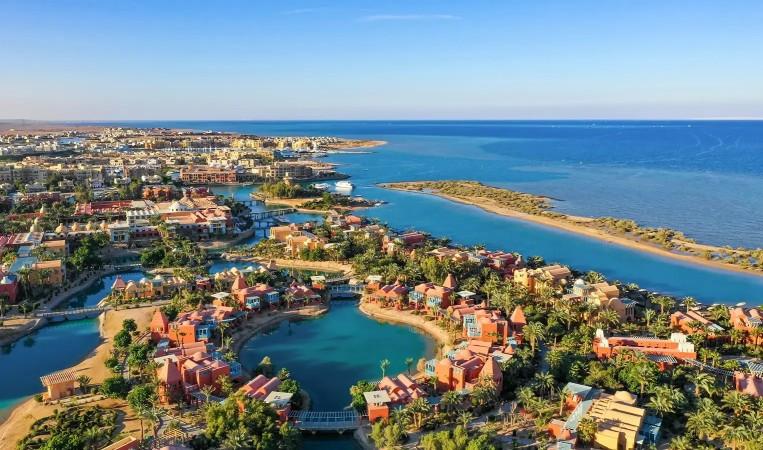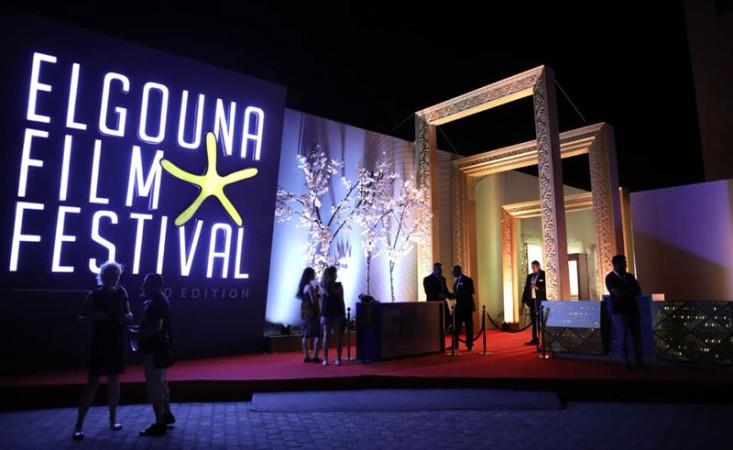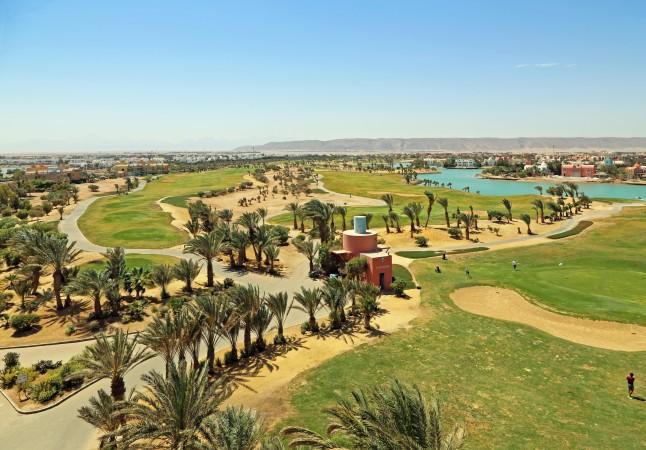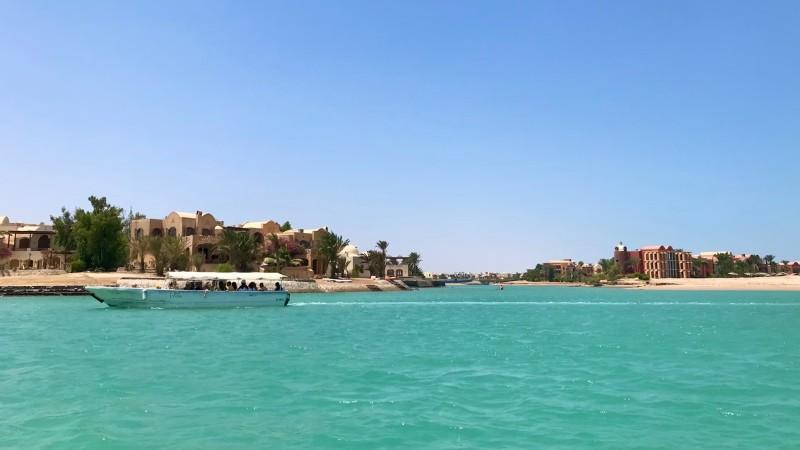Explore El Gouna - Egypt Travel, Africa
Nestled along Egypt’s Red Sea coast, El Gouna is a vibrant, eco-conscious resort town that captivates visitors with its pristine beaches, crystal-clear lagoons, and modern infrastructure. Often referred to as the “Venice of the Red Sea,” El Gouna is a picturesque town designed to offer a luxurious escape while embracing sustainability. With its year-round sunshine, world-class amenities, and unique blend of Egyptian and Mediterranean cultures, this destination has become a favorite for travelers who crave both relaxation and adventure.
Population: Approximately 24,000 in 2021.
Economy: El Gouna's economy is driven by tourism, real estate, and water sports, with a focus on luxury resorts and eco-friendly developments.
Landmarks: Famous for the Mangroovy Beach, Zeytouna Beach, and the Abu Tig Marina.
Egypt

Overview of El Gouna
History & Cultural Influences
El Gouna, founded in 1989 by Egyptian entrepreneur Samih Sawiris, was meant to be both sustainable and luxurious. The town’s architecture reflects a unique fusion of Egyptian, Nubian, and Mediterranean influences, creating a charming and distinct aesthetic. As you walk around the town, you'll notice traditional earth-toned buildings contrasted with modern conveniences, representing the town’s rich cultural blend. Together with its location close to some of the country’s most famous ancient landmarks, such as the Temples of Luxor and the Valley of the Kings, making it an ideal base for those looking to dive deeper into Egypt's ancient past.
Interaction with The Locals
El Gouna has a small, diverse population, including both locals and expatriates. The town attracts people from various parts of Egypt and around the world, making it a multicultural community. Many citizens work in tourism, hospitality, and environmental initiatives, reflecting El Gouna's eco-friendly ethos. The locals are famous for their friendliness and hospitality, which creates a welcome environment for visitors. Despite its modern amenities, El Gouna maintains a laid-back, community-focused vibe, making it an appealing place for both short-term visitors and long-term residents.

El Gouna town - © El Gouna Official Website
Top Attractions in El Gouna
El Gouna is home to a variety of attractions that offer a mix of leisure, adventure, and cultural discovery. From its sun-soaked beaches to its artistic landmarks, every corner of this resort town is designed to captivate visitors.
Mangroovy Beach
Known as the kite surfing capital of the Red Sea, Mangroovy Beach draws water sports enthusiasts from around the world. The steady winds create ideal conditions for both beginners and experts. Visitors can rent equipment, take lessons from professionals, or simply watch the colorful kites dance across the horizon. If you’re more into relaxation, there are lounge chairs and beach bars where you can soak up the sun and sip a cool drink.
Zeytouna Beach
Located on its own island, Zeytouna Beach offers a more serene experience. The beach features long wooden walkways that stretch out over the clear waters, leading to coral reefs perfect for snorkeling. With plenty of sunbeds, restaurants, and a lively beach bar, it’s a great spot for families or anyone looking to unwind in a peaceful setting. You can also take a glass-bottom boat tour to admire the marine life without getting wet.
Abu Tig Marina
As the heart of El Gouna’s social life, Abu Tig Marina is a vibrant and luxurious destination, bustling with activity both day and night. By day, the marina is a beautiful place to stroll among the luxury yachts, soaking in the Mediterranean-style architecture. As the sun sets, Abu Tig Marina transforms into a lively nightlife spot with a variety of cuisines, from authentic Egyptian dishes to fine international dining.
El Gouna Museum
The El Gouna Museum offers visitors a chance to dive into the rich culture and heritage of Egypt without leaving the resort town. The museum houses over 90 exhibits, with a focus on contemporary Egyptian art and historical artifacts that reflect the country’s vast cultural legacy. One of the highlights is the museum’s Pharaonic-inspired art, which includes pieces that pay homage to Egypt’s ancient civilizations.

Zeytouna Beach - © Marc Ryckaert
Must-Try Dishes in El Gouna
El Gouna's dynamic food scene combines traditional Egyptian cooking with foreign flavors. Whether you’re dining at a beachside café or a local eatery, these must-try local dishes showcase the essence of Egypt's rich food culture.
- Koshari: This beloved Egyptian street food is a satisfying mix of rice, lentils, chickpeas, and pasta, topped with a tangy tomato sauce, crispy fried onions, and a splash of garlic vinegar. It’s a vegetarian-friendly dish that packs bold flavors in every bite.
- Molokhia: A staple in Egyptian households, Molokhia is a nutrient-rich soup made from finely chopped jute leaves. It's typically served with rice or toast, seasoned with garlic and coriander, and paired with chicken or rabbit.
- Feteer Meshaltet: This flaky, buttery pastry is known as Egyptian pie. Feteer can be enjoyed both savory or sweet, filled with ingredients like cheese, honey, or minced meat. It's a popular dish in many traditional restaurants.
- Om Ali: Egypt’s version of bread pudding, Om Ali is a warm, creamy dessert made with layers of puff pastry, nuts, raisins, and sweetened milk. Baked until golden, it’s served hot and is a perfect way to end a meal.
- Roz Bel Laban: This creamy rice pudding is another beloved Egyptian dessert. Made from rice, milk, sugar, and flavored with cinnamon or vanilla, it's simple yet delicious, offering a sweet conclusion to any dining experience in El Gouna.
- Hawawshi: Hawawshi is a famous street snack that resembles Egyptian-style filled bread. Minced meat, onions, and spices are packed inside flatbread and baked until crispy. It’s flavorful and perfect for a quick, satisfying meal.

Koshari - © Arroz Montsià
Festivals & Local Celebrations
El Gouna Film Festival (GFF)
The El Gouna Film Festival is one of the most prominent cultural events in the Middle East, taking place every fall. The festival is known for attracting international and Arab filmmakers, actors, and cinema enthusiasts. Over the course of 10 days, El Gouna transforms into a glamorous film hub, with red carpet events, film screenings, workshops, and panel discussions. Movies from all over the world are showcased, including independent films, documentaries, and thought-provoking features. The festival is a celebration of creativity, offering film lovers the chance to meet and interact with some of the industry's biggest names.
Coptic Christmas and Easter
Although predominantly a Muslim country, Egypt has a significant Christian population, and Coptic Christmas (January 7) and Easter are widely celebrated in El Gouna. During these holidays, local Coptic Christians attend midnight masses in churches around the town. The festive spirit is visible with homes and markets decorated with colorful lights, and special treats like Kahk (buttery cookies dusted with powdered sugar) are shared among family and friends. Many restaurants and cafes offer special holiday menus, allowing tourists to indulge in traditional Coptic dishes.
Sham El-Nessim
Celebrated since the days of ancient Egypt, Sham El-Nessim is a springtime festival that marks the start of the harvest season and is celebrated the day after Coptic Easter. In El Gouna, this holiday is a family affair, with locals and visitors heading to the beaches or parks for outdoor picnics. The festival is best known for its traditional foods, such as Feseekh (salted fish), tirmis (lupin beans), and colored boiled eggs, symbolizing renewal and new life. The relaxed and joyful atmosphere, combined with the beautiful spring weather, makes Sham El-Nessim an ideal time to visit El Gouna.

El Gouna Film Festival (GFF) - © Cairo Scene
What to Do in El Gouna
- Diving and Snorkeling: The Red Sea is one of the world’s best diving destinations, and El Gouna offers direct access to its stunning underwater world. Dive and snorkeling around town provide trips to coral reefs, wrecks, and marine reserves.
- Kitesurfing: El Gouna is renowned for its consistent winds, making it a prime destination for kitesurfing. The town also holds a number of kiteboarding events and contests throughout the year.
- Desert Safaris: Explore the desert that surrounds El Gouna with a thrilling desert safari. Visitors can choose between jeep tours, quad biking, or camel rides, giving them a chance to experience the vast dunes and the beauty of the arid landscape.
- Spa and Wellness Retreats: For those seeking relaxation, El Gouna boasts numerous luxury spas that offer a range of treatments from massages to hydrotherapy. Many of the hotels have world-class wellness centers where you can indulge in a day of pampering while enjoying views of the Red Sea.
- Golfing Tours: El Gouna is home to a championship-level golf course designed by professional golfers. It offers stunning views of the Red Sea and the desert, making it a perfect spot for golf enthusiasts to enjoy a round in a beautiful setting.
Shopping in El Gouna
- Downtown El Gouna: This bustling area is home to a variety of boutiques, art galleries, and craft shops. Here, you can find handmade jewelry, traditional Egyptian clothing, and unique home decor items that make for perfect souvenirs.
- Abu Tig Marina Shops: The stylish boutiques at Abu Tig Marina offer a more upscale shopping experience. You’ll find designer clothing, luxury accessories, and high-end brands in this chic area.
- El Gouna Souk: For a more authentic shopping experience, visit the El Gouna Souk, a traditional Egyptian market where you can haggle for items like spices, handmade carpets, and brassware.
- Shopping Festivals: El Gouna also hosts shopping festivals where local and international brands come together, offering great deals and promotions. These events are often held during the peak tourist seasons and add an extra layer of excitement to the shopping experience.

Golfing Tours in El Gouna - © Marc Ryckaert
Weather in El Gouna: Best Time to Visit
Spring in El Gouna
Spring in El Gouna is warm and sunny, with daytime temperatures ranging from 20°C to 30°C (68°F to 86°F). This is a popular time for tourists seeking pleasant weather without the extreme heat of summer. The moderate temperatures and blooming landscapes attract travelers looking to enjoy outdoor activities and sightseeing. This is also a favored season for cultural events and festivals, such as the El Gouna Film Festival and is ideal for exploring the town’s attractions.
Summer in El Gouna
Summers are hot and dry, with temperatures ranging from 30°C to 40°C (86°F to 104°F). Cooling sea breezes, especially around the coast, help to soften the hot heat. El Gouna's main tourist season is during the summer, when the weather's hot and sunny and the beaches are excellent. The hot weather makes it excellent for sunbathing, swimming, and participating in water activities like kite surfing and diving.
Autumn in El Gouna
Autumn brings slightly cooler temperatures, ranging from 25°C to 35°C (77°F to 95°F). This season is a great time for travelers who prefer slightly cooler weather while still enjoying warm sea temperatures. The reduced crowds compared to summer make it a perfect season for a more relaxed experience. The pleasant weather is conducive to exploring the town and engaging in outdoor activities, such as golfing and desert excursions.
Winter in El Gouna
Winters in El Gouna are mild and pleasant, with temperatures ranging from 15°C to 25°C (59°F to 77°F), making it an attractive escape for those from colder climates. The winter months see fewer crowds, offering a more tranquil experience. Visitors often enjoy the seasonal festivities and holidays, including Coptic Christmas and New Year celebrations.

Cruising Tours around El Gouna - © Yevhenii Foshchan
Essential Travel Information
Getting Around El Gouna
- Local Shuttle Buses: El Gouna offers an efficient and reliable shuttle bus system that connects major hotels, attractions, and the downtown area. These shuttles are a convenient option for tourists who prefer not to drive and wish to explore the town comfortably.
- Bicycles and Golf Carts: Known for its eco-friendly approach, El Gouna has an extensive network of bike lanes. Renting a bike or golf cart is a popular and entertaining method to get about town. Golf carts are particularly useful for short trips within the town and resort areas.
- Taxis and Ride-Sharing: Taxis are readily available and can be hailed from the street or booked through local taxi services. Additionally, ride-sharing apps are operational in El Gouna, providing a modern alternative to traditional taxis.
- Water Taxis: El Gouna’s canals and lagoons can be explored via water taxis. These offer a unique and scenic way to travel between different parts of the town, especially the marina and beach areas.
ATM & Banking Services
El Gouna provides convenient banking and financial services to both visitors and residents. ATMs are widely available throughout the town, offering 24/7 access to cash in local and international currencies. Several banks with branches in El Gouna offer a range of services, including currency exchange, deposits, and withdrawals. Visitors can also use currency exchange bureaus and take advantage of credit and debit card acceptance at most establishments.
Where to Stay in El Gouna
- Luxury Resorts: For those seeking a high-end experience, these resorts often include upscale rooms, fine dining options, private beaches, and extensive recreational facilities, ensuring a lavish and comfortable stay.
- Boutique Hotels: Travelers looking for a more personalized touch can opt for boutique hotels. These accommodations offer a unique atmosphere with distinct decor, personalized service, and a more intimate setting, providing a charming and memorable stay.
- Mid-Range Hotels: Mid-range hotels in El Gouna offer a good balance of comfort and affordability. These hotels provide essential amenities, pools, and convenient access to local attractions, making them a great choice for travelers seeking value for money.
- Budget Lodgings: For those on a tighter budget, El Gouna has several budget-friendly options, including hostels and guesthouses. These accommodations offer basic comfort and essential services without breaking the bank.
Articles for you

Explore Yala National Park - Sri Lanka Travel, Asia
Tucked away in Sri Lanka’s southeastern corner, Yala National Park is where wild nature meets deep tradition. Known worldwide for its leopard population, the park is also home to elephants, sloth bears, crocodiles, and hundreds of bird species. Beyond wildlife, Yala opens doors to a cultural landscape dotted with ancient temples, Buddhist ruins, and coastal villages. For travelers seeking more than just a safari, Yala offers a chance to explore eco-tourism, local communities, and sacred heritage sites.
Population: The Yala National Park area doesn’t have a human population.
Economy: The economy around Yala National Park thrives on a blend of eco-tourism, agriculture, and local services. Safari tours, eco-lodges, and cultural experiences drive steady income for nearby towns like Tissamaharama and Kataragama, supporting thousands of families.
Landmarks: Famous for Block I of Yala and wildlife encounters, including elephants, sloth bears, crocodiles, and exotic bird species.

Explore Galle - Sri Lanka Travel, Asia
Nestled on Sri Lanka’s southern coastline, Galle is a vibrant city where history meets the sea. Its cobbled streets, colonial architecture, and serene beaches make it a must-visit destination for travelers seeking a blend of culture, adventure, and relaxation. A UNESCO World Heritage site, Galle captivates visitors with its Dutch Fort, bustling markets, and friendly locals. Whether you’re exploring the ramparts at sunset or savoring fresh seafood by the shore, Galle promises an unforgettable journey into Sri Lanka’s heritage.
Population: Approximately 113,000 in 2023.
Economy: Galle’s economy thrives on tourism, trade, and fisheries. The city’s historic fort, colonial architecture, and coastal charm draw thousands of international visitors each year, making tourism its main economic driver. Fishing remains vital for local livelihoods, supplying fresh seafood across the region.
Landmarks: Famous for the Galle Fort, Dutch Reformed Church & Maritime Museum, and Unawatuna Beach.

Explore Bentota - Sri Lanka Travel, Asia
Nestled along Sri Lanka’s southwestern coast, Bentota is a tropical paradise that blends golden beaches, vibrant culture, and thrilling adventures. Famous for its calm waters, luxury resorts, and scenic river estuary, Bentota has become a top destination for travelers seeking both relaxation and authentic experiences. From serene beach walks at sunrise to adrenaline-pumping water sports, this coastal town offers a perfect balance of leisure and exploration. With its proximity to Colombo and Galle, Bentota is easy to reach, making it an ideal stop for both short escapes and extended holidays.
Population: Approximately 37,000 in 2023.
Economy: Bentota’s economy thrives mainly on tourism, which drives local businesses such as hotels, restaurants, and wellness retreats. The town also benefits from fishing, coconut cultivation, and handicrafts like wood carving and batik textiles. Many residents rely on the growing demand for water sports and Ayurvedic treatments, making tourism the backbone of both income and employment in the area.
Landmarks: Famous for Bentota Beach, Bentota River Safari, and Kande Vihara Temple.

Explore Mirissa - Sri Lanka Travel, Asia
Mirissa is a charming coastal town on Sri Lanka’s southern shoreline. Known for its golden beaches, turquoise waters, and vibrant marine life, it has become a must-visit stop for travelers exploring the island. Many come for whale watching, surfing, and sunset views at Coconut Tree Hill, but Mirissa offers much more than postcard beauty. The fishing boats you see anchored by the bay carry generations of stories. Local traditions, delicious cuisine, and a laid-back rhythm of life shape every visitor’s experience.
Population: Approximately 4,700 in 2023.
Economy: Mirissa’s economy is largely shaped by its coastal location. Fishing has long been the backbone of local livelihoods, with generations relying on the Indian Ocean for income. In recent decades, tourism has become the main driver of growth, thanks to whale watching, surfing, and beachside hospitality.
Landmarks: Famous for Mirissa Beach, Coconut Tree Hill, and Parrot Rock Bridge.

Explore Nuwara Eliya - Sri Lanka Travel, Asia
Tucked away in the Central Highlands of Sri Lanka, Nuwara Eliya is often called “Little England”. With its rolling tea plantations, cool misty mornings, and colonial charm, this mountain town feels like a step into another world. Travelers come here to breathe fresh air, walk through flower gardens, sip the finest Ceylon Tea, and enjoy a pace of life far from the island’s busy cities. Whether you’re drawn by scenic landscapes, heritage architecture, or the warmth of its people, Nuwara Eliya is a destination that blends nature, culture, and history in perfect harmony.
Population: Approximately 781,000 in 2023.
Economy: Nuwara Eliya’s economy thrives mainly on tea production, as it sits in the heart of Sri Lanka’s central highlands, famous worldwide for Ceylon Tea. The city also benefits from a growing tourism industry, attracting visitors with its colonial charm, cool climate, and scenic landscapes.
Landmarks: Famous for Gregory Lake, Hakgala Botanical Garden, and Victoria Park.

Explore Sukau - Malaysia Travel, Asia
Nestled on the banks of the Kinabatangan River in Sabah, Malaysian Borneo, Sukau is a destination where wildlife, culture, and conservation come together. Known as one of Asia’s top spots for river safaris and eco-tourism, this quiet village offers a front-row seat to encounters with Bornean orangutans, pygmy elephants, proboscis monkeys, and exotic birdlife.
Population: Approximately 1,400 in 2019.
Economy: Sukau’s economy is shaped by its riverine location and natural resources. Traditionally, the Orang Sungai community relied on fishing, small-scale farming, and forest gathering for their livelihood. Today, the village has shifted toward eco-tourism, with river cruises, jungle trekking, and homestays providing income.
Landmarks: Famous for the Kinabatangan River cruises, Gomantong Caves, and Ox-bow lakes and wetlands.
